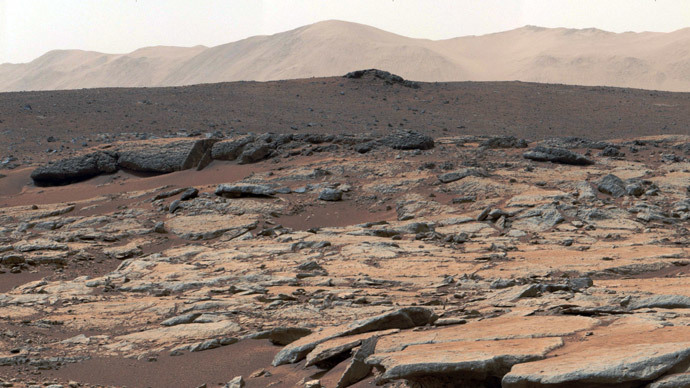Those hoping to send humans to Mars in just over a decade might have to wait. According to a new study, humans living on the Red Planet would begin dying off within 68 days of landing on the fourth rock from the sun.
The Mars One plan to send humans to Mars by 2025 has certainly captured a lot of imaginations. After the application deadline came and passed earlier this month, more than 200,000 people from 140 countries had applied to make mankind’s maiden voyage to the Red Planet.
According to researchers at the Massachusetts Institute of Technology, there is one problem: if they did make the trip, they would all die off within a couple months.
Drawing on data from the Mars One group, the team used computer modeling to determine the required amounts of oxygen, food and technology needed for the project.
According to their 35-page report, the problem, ironically, is not too little oxygen, but rather, too much of it. So far, Mars One plans to grow its crops in the same space where people live. According to the data, the first wheat crop would reach maturity at around 68 days, causing a spike in oxygen.
The problem is, all of that oxygen is highly flammable and will need to be vented out. Existing technology, however, does not allow for vents to distinguish nitrogen from oxygen, so as the oxygen is sucked out, so goes the nitrogen.
That would leave the colonizers with two choices: die due to suffocation from low air pressure or watch your entire Martian colony erupt in a ball of fire. If that’s not enough, the colonists would be living in sweltering 100 degree humidity while the wheat reached maturity. The students also found that the Dutch-based Mars One group had drastically underestimated the cost of spare parts, logistics and maintenance required to keep the station up and running.
“The continued operation of the ISS [International Space Station] is dependent upon regular (and even unplanned) resupply of replacement parts from Earth, and in the event of an unrecoverable system failure the crew have the option to quickly return to Earth. On Mars, resupply logistics will be much more challenging and there will be no feasible option for the crew to return to Earth in a timely manner,” the report read.
It added that the ability to repair and sustain systems on the planet, as well as having access to the parts necessary to do this, “is critical to mission safety.”
The team said that after 130 months on the Martian surface, spare parts would begin to take up 62 percent of the mass transported there. It added that in the most optimistic scenario, “the first crew of a Mars settlement will require approximately 15 Falcon Heavy launches costing $4.5 billion, and these values will grow with additional crews.”
Psychological strain, limited diet, constrained living space and repetitive social interactions are also noted as potential problems.

The longest any human being has ever stayed in space was 437 days. The cosmonaut to achieve the feat was Valery Polyakov, who spent his time aboard the Mir space station nearly two decades back.
Polyakov spoke at the time of having a rough time adjusting to conditions on the station, though mentally he rebounded within three weeks’ time.
A doctor by trade, Polyakov volunteered for the mission to prove the human body could survive the strains of microgravity for a long enough period to survive the journey to Mars.
As it stands, Polyakov’s record will unlikely be broken until humans venture to the Red Planet.
In line with its tentative schedule, Mars One plans to send their first crew of four astronauts to Mars in 2025 following a seven-month voyage from Earth. Additional teams would be sent every other year, with the hope that by 2033, more than 20 people will be living on the planet. Mars One intends to send a communication station, habitat modules and a rover to the planet before humans make their grand appearance.
For those who boldly go where no man has gone before, one thing remains certain: whether they live 68 days or 68 years, Mars One has stressed to its potential astronauts that there’s no going back.
But for the pioneers willing to take the trip, that small sacrifice will be worth the next great leap they hope to make for mankind.

